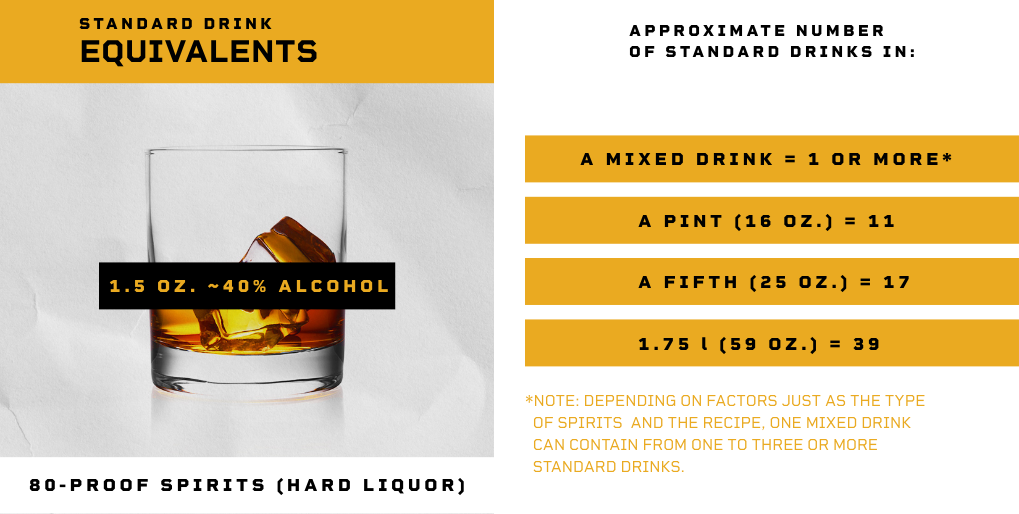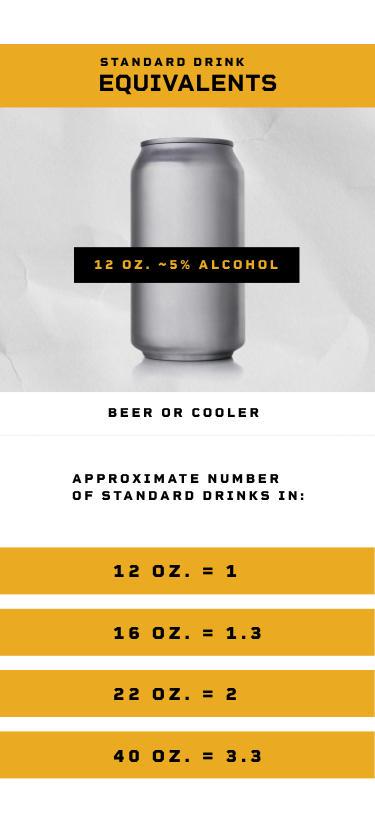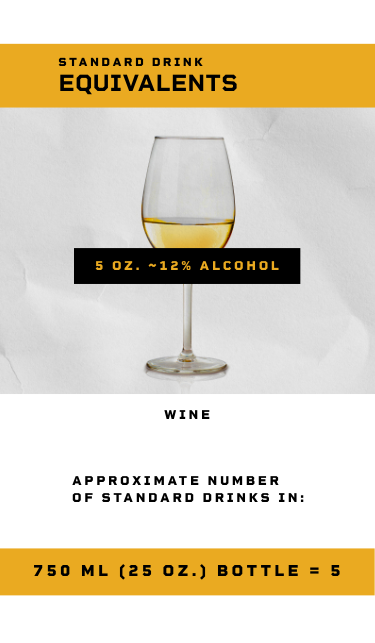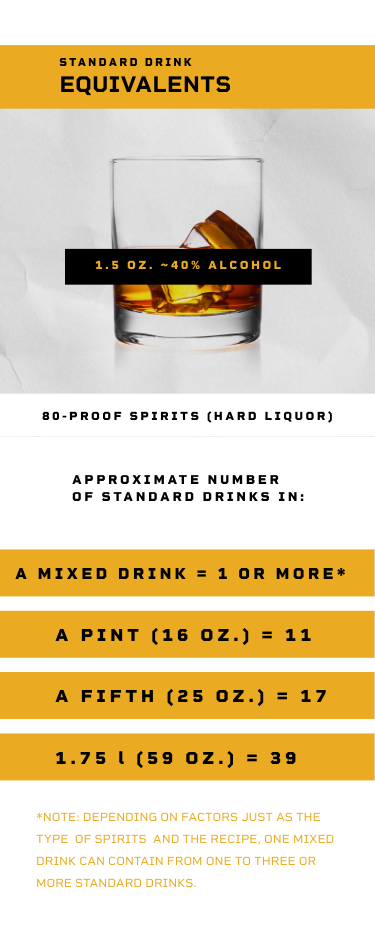Know Your Limit
Every person has their limit. It’s up to you to know yours.
To keep from drinking past your limit, you need to establish firm drinking boundaries. Although data can approximate how much you can drink before it becomes too dangerous to drive, almost every person has their own unique limitations. The best way to avoid danger altogether, is to never drive after drinking.
Most references to drinking alcohol refer to the amount of alcohol contained in a “standard drink.” A standard drink is generally defined as any beverage that contains 14 grams of pure alcohol (about 0.6 fluid ounces or slightly more than tablespoon). Whether pouring your own drink, having a cocktail at a bar or enjoying a beer at the stadium, it’s critical to recognize that you may be consuming more alcohol than what is included in a “standard drink.”
The chart below outlines standard drink equivalents as well as the number of standard drinks in different container sizes. It also summarizes the percent of alcohol by volume in each type of drink. These numbers are only approximations. Different brands and types of beverages, such as micro-brews, wines and types of liquor, vary in their actual size and alcohol content.
Common Misconceptions of Alcohol Absorption
Many myths and misconceptions surround the consumption of alcohol. Here are some of the most common falsehoods:
Myth: Greasy food and black coffee will sober me up.
Fact: Although it might temporarily make your headache and hunger go away, coffee and greasy food do not sober you up. Only time will sober you up.
Myth: One glass = one drink.
Fact: Glasses come in various sizes at different venues where alcohol is served — and the bartenders serving those alcoholic drinks can over or under pour. When it comes to beer, different brews have varying levels of alcohol.
Myth: Beer has less alcohol than other drinks.
Fact: A standard 12-ounce bottle of beer has the same amount of alcohol as a standard shot of 80-proof liquor or 5 ounces of wine.
Blood Alcohol Content Calculator
DISCLAIMER: The blood alcohol concentration (BAC) calculator is designed as a reference tool ONLY — it is not approved or accepted for use by the Oklahoma Board of Tests for Alcohol and Drug Influence and its results should not be relied upon to determine whether or not a person's blood alcohol concentration is above the legal limit or to determine if a person is actually impaired. Other factors must also be considered, such as the type and quantity of alcohol consumed, the effects of medication, or health and physiological conditions. Refusal to submit to a test for the purpose of determining blood alcohol concentration will result in a revocation of driving privileges.






